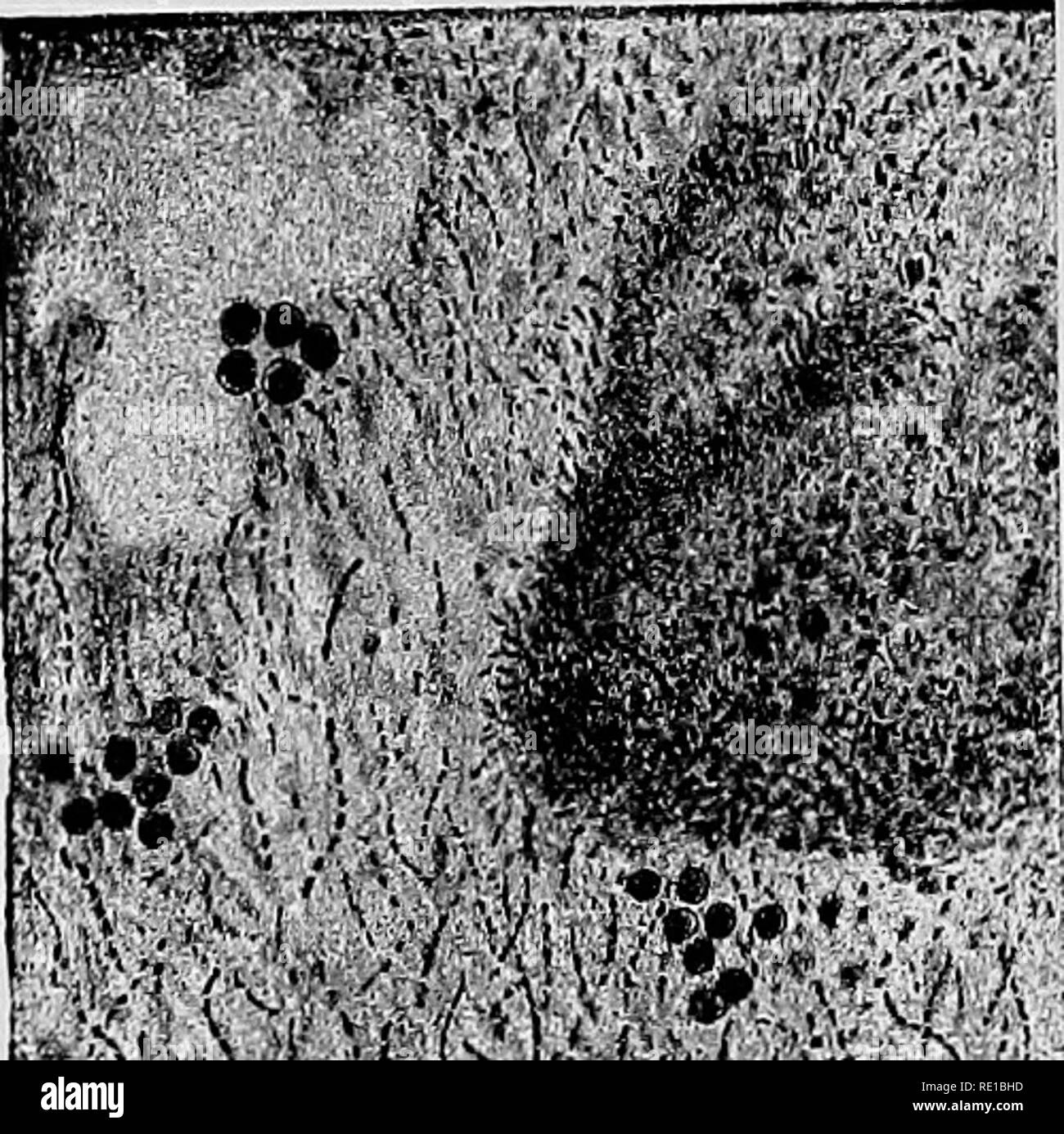. A text-book upon the pathogenic Bacteria and Protozoa for students of medicine and physicians. Bacteriology; Pathogenic bacteria; Protozoa. 788 Mycetoma, or Madura-foot. '^K l!/J' actinomyces in structure. Boyce and Surveyor,* after studying eighteen cases of the disease, concluded that the fungi present pre- sented many of the characteristics of the fungus actinomyces. Boycef later cultivated a streptothrix, from a case of Madura foot that differed somewhat from fungi previously cultivated. Adami and KirkpatrickJ believe that the fungus observed by them was identical with the actinomyces. I

Image details
Contributor:
The Book Worm / Alamy Stock PhotoImage ID:
RE1BHDFile size:
7.2 MB (516.7 KB Compressed download)Releases:
Model - no | Property - noDo I need a release?Dimensions:
1584 x 1578 px | 26.8 x 26.7 cm | 10.6 x 10.5 inches | 150dpiMore information:
This image is a public domain image, which means either that copyright has expired in the image or the copyright holder has waived their copyright. Alamy charges you a fee for access to the high resolution copy of the image.
This image could have imperfections as it’s either historical or reportage.
. A text-book upon the pathogenic Bacteria and Protozoa for students of medicine and physicians. Bacteriology; Pathogenic bacteria; Protozoa. 788 Mycetoma, or Madura-foot. '^K l!/J' actinomyces in structure. Boyce and Surveyor, * after studying eighteen cases of the disease, concluded that the fungi present pre- sented many of the characteristics of the fungus actinomyces. Boycef later cultivated a streptothrix, from a case of Madura foot that differed somewhat from fungi previously cultivated. Adami and KirkpatrickJ believe that the fungus observed by them was identical with the actinomyces. It -seems probable, therefore, that Madura disease is a form of actinomycosis, caused by a parasite best called Actinomyces madura. It differs from Actinomyces bovis in the greater ease with which it is cultivated—if, indeed the organ- isms cultivated are the same as those observed in the sections. Morphology.—Under the micro- scope the organism which belongs to the higher bacteria, is found to consist of long, branched threads forming a tangled mass. The peripheral filaments radiate from the center, and form clubs much like those of Actinomyces. In some cases it is said that no clubs were observed, in other cases that they were longer and more slender than in Actinomyces. Staining.—^The organism stains easily and holds the stain well after Gram's method. It is not acid-fast. Cultivation.—^Vincent succeeded in isolating the specific micro- organism by puncturing one of the nodes with a sterile pipette, and cultivated it upon artificial media, acid vegetable infusions seeming best adapted to its growth. It develops scantily at the room temperature, better at37°C.—in from four to five days. In twenty to thirty days a colony attains the size of a little pea. Bouillon.—In bouillon and other liquid media the organisms form little clumps resembling those of Actinomyces. They cling to the glass, remain near the surface of the medium, and develop a rose- or bright-red color